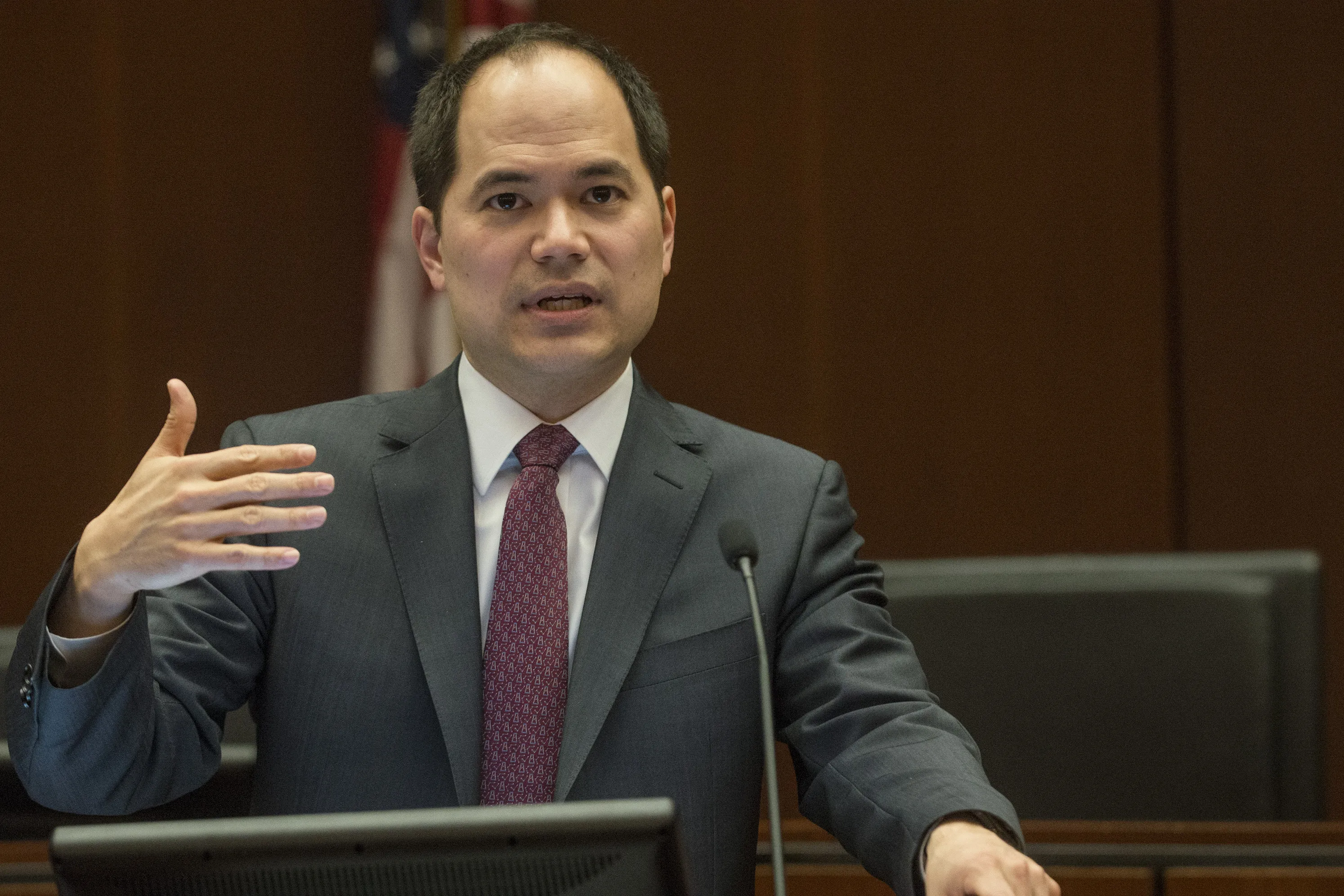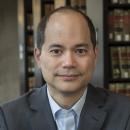The Coase Lecture: Hubbard Applies Physics to Law and Economics

Using physics as an analogy to better understand and highlight the contributions of behavioral economics, Assistant Professor William H.J. Hubbard, ’00, delivered this year’s Ronald H. Coase Lecture in Law and Economics with a call to advance the economic analysis of law by finding the discipline’s own “theory of relativity” — one that tells us which laws and institutions actually create well-functioning market economies.
In his talk, “Newtonian Law and Economics, Quantum Law and Economics, and the Search for a Theory of Relativity,” Hubbard used both Newtonian and quantum mechanics to argue that behavioral economics, which takes the bounded rationality and cognitive bias of individuals into account, doesn’t necessarily challenge or overturn the principles of neoclassical economics, which, for the sake of theoretical simplicity, assume that people behave rationally. In his analogy, he equated neoclassical economics to Newtonian mechanics, the set of physical laws that describe motion at a macro level but doesn’t hold true at the nano level, and behavioral economics to quantum mechanics, which deals with physical phenomena at the less predictable nano level.
“Just as Newtonian mechanics breaks down when you look at the constituent pieces of our universe, neoclassical economics breaks down at the scale of the fundamental constituent pieces of our social universe, individual human beings,” Hubbard said. “And just as quantum mechanics provides the nano-foundations for all of physics, behavioral economics provides the nano-foundations for all of economics.”
Mathematical models that assume purely rational actors don’t account for seemingly irrational behavior — for instance, why judges who decided more serious cases early in their careers tend to be more lenient than judges who saw less serious cases (the result of a cognitive bias known as the Contrast Effect) or why having more choices can seem oppressive rather than liberating.
“An important lesson from our examination of quantum and Newtonian economics is that all economics is behavioral economics,” Hubbard said. “Indeed, behavioral economics brings economics back to its roots, all the way back to Adam Smith, who grounded his economic reasoning in thoughtful reasoning of the real world — not only of the rational, but also of moral and emotional aspects of human action. This contribution of behavioral economics cannot be understated.”
Indeed, even the Coase Theorem, which imagines a world of zero transaction costs, isn’t actually refuted by behavioral economics, Hubbard argued, because Coase — the Nobel laureate and longtime Law School professor for whom the lecture is named — wasn’t actually interested in such a world. “Rather, the thrust of his insight was that we can understand deviations from efficient market structures and efficient private ordering if we understand transaction costs. We can sometimes improve markets and improve social welfare by reducing transaction costs.”
And these costs, he continued, can be influenced by cognitive phenomena.
“Behavioral economics is not a refutation of Coasean economics,” he said. “It is Coasean economics.”
Further, in both physics and economics, the macro view offers a good approximation of how matter — or markets — will behave, even if it doesn’t hold true at the micro level, an idea reflected in Correspondence Principle of quantum physics, Hubbard said. As a result, each economic and physical theory has its place, he argued, because not everything needs nano-level analysis.
“You don’t need quantum mechanics to build a dam, but you do need quantum mechanics to build a smartphone,” he said. “The challenge for law and economics is figuring out when it is we’re dealing with a dam, and when it is we’re dealing with a smartphone.”
A similar analogy applies at the super-macro level as well. Just as Newtonian mechanics does a good job of explaining how things work on Earth but doesn’t explain why some stars give us Earth and others collapse into black holes, Newtonian law and economics does a pretty good job of explaining how markets work in well-functioning market economies “but, frankly, does a terrible job of explaining why some places turn into well-functioning market economics and other places collapse into black holes,” he said.
To illustrate his point, he showed a NASA image of dark, energy-poor North Korea sandwiched like a black hole between well-lit South Korea and China — visible evidence of how different laws and institutions on each side of the 38th parallel impacted economic development.
Hubbard noted that physics has the Theory of Relativity to explain black holes in the cosmos, but that law and economics has no theory that "tells us how we get 'Earth' and how we get 'black holes.' "
"We know that institutions matter, but which institutions? That is the hard question, and that is the search for the theory of relativity,” he said.
The challenge for lawyers, therefore, “is to apply to the law the lessons of quantum economics and Newtonian economics with careful regard for the principles that explain their limits and their applications,” Hubbard said. “It falls upon us to piece together a theory of relativity that can make sense of the roles of law and lawyers, not just for our society but for the future of this world.”
